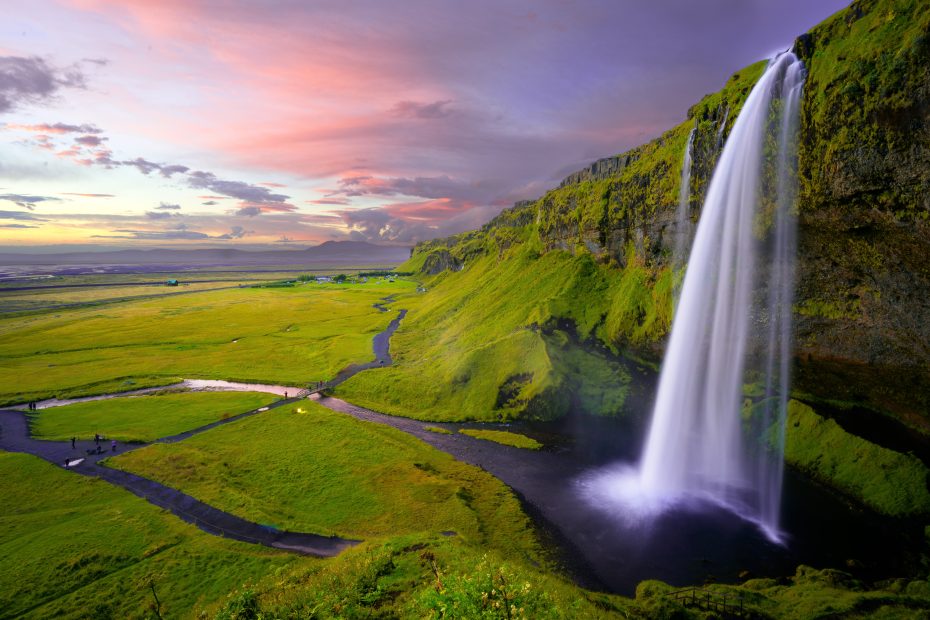Table of Contents
Introduction
The dazzling natural phenomenon known as the Northern Lights, or aurora borealis, is a bucket list experience for travelers from around the world. This celestial light show of wildly dancing streaks and swirls of green, purple, red, and blue is caused by solar particles interacting with the earth’s atmosphere near the magnetic poles. Iceland is widely considered one of the best places on earth to witness these mystifying lights, thanks to its prime location just below the Arctic Circle, frequent clear nights, and lack of light pollution. Read on for essential tips on maximizing your chances of seeing the magical Northern Lights in Iceland.
When to See the Northern Lights in Iceland
The aurora borealis can only be seen during the long winter nights in Iceland. The months between September and April offer the best visibility. The lights appear most frequently and are strongest during the peak winter months of December, January, and February when the nights are the longest. However, late autumn and early spring can also deliver amazing sightings. You’ll want to hope for clear, dark skies to see the Northern Lights, which means following weather forecasts closely and being prepared to stay up late into the night. The lights tend to be most active between 9 pm and 1 am. Seeing them is never guaranteed, so having flexibility in your itinerary is key.
Best Locations in Iceland for Viewing the Northern Lights
To optimize your chances, it’s essential to get away from the light pollution of cities like Reykjavik. Head to Iceland’s rural countryside and vast wide-open landscapes. Some of the best places include Thingvellir National Park, the Snaefellsnes Peninsula, and the Eastfjords region. Having a panoramic view of the horizon will let you see any Northern Lights activity. Favorite viewing spots are along Iceland’s scenic south coast, on the shore of Lake Myvatn, or atop the remote Westfjords peninsulas. Find a comfortable place to stand or sit for long periods of time.
Booking an Iceland Northern Lights Tour
Joining a guided Northern Lights tour takes the guesswork out of the experience and often includes local expertise and photography instruction. Bus tours depart from Reykjavik and provide transport to optimal viewing locations. Small group tours in vans allow for more flexibility. Private tours are the most customizable option. Boat tours offer unique vantage points from Iceland’s dramatic coastline. When comparing tours, look at group size, add-on activities, inclusion of photos, and pick-up/drop-off logistics.
Photographing the Northern Lights
Capturing the aurora borealis is a challenge but immensely rewarding. Use a DSLR camera with manual settings and a wide lens. Set your ISO to 1600-3200 to compensate for low light. Open your aperture to f2.8 or lower for faster exposures. Experiment with shutter speeds of 5-30 seconds. Use a sturdy tripod so you can take longer exposures. Incorporate interesting foreground elements like mountains or glaciers to add scale. Bracket your shots at different exposures to ensure you get the shot.
What to Expect When Seeing the Northern Lights
Videos don’t do justice to the real-life splendor and intensity of the Northern Lights. The glowing bands of light ebb and flow hypnotically across the night sky. Shapes shift from diffuse glows to light bursts streaming vertically. Colors range from bright green to hints of purple, pink and red. Witnessing a major geomagnetic storm is awe-inspiring, with vigorous waves of light dancing overhead. The movement and variability make each sighting unique. It’s an otherworldly experience that creates an unforgettable memory.
Additional Tips for Northern Lights Chasers
While seeing the aurora is never guaranteed, following these tips will improve your chances:
– Check detailed Northern Lights forecasts daily and be prepared to stay up all night.
– Dress as warmly as possible in winter gear from head to toe. Standing outside for hours in subzero temperatures gets frigid.
– Allow 15-30 minutes for your eyes to adjust to the darkness for optimal viewing.
– Have realistic expectations. Photos online likely show longer exposures than the eye can see unaided.
– Appreciate the marvel of the experience rather than stressing about capturing the perfect photo. The lights are ethereal in person.
Conclusion
A visit to Iceland presents the rare opportunity to witness one of nature’s most dazzling wonders: the Northern Lights. This mystical phenomenon has captivated travelers for centuries with its mesmerizing, multicolored dance in the night sky. By choosing the right season, escape light pollution, check forecasts diligently, and bundle up, you’ll have an excellent chance to fulfill the quest of seeing the legendary aurora borealis over Iceland’s dramatic landscapes. The sight will leave you awestruck and eager to chase the Northern Lights again.
FAQs
What time of year is best to see the Northern Lights in Iceland?
The peak season is October through March, with winter months offering the longest and clearest nights. But sightings are possible September through April.
What weather conditions are ideal for viewing the lights?
Clear, dark skies are essential. Cloud cover and precipitation will obstruct viewing. Little to no wind and dry air help, too. Check forecasts regularly.
Do I need special photography equipment to photograph the Northern Lights?
A DSLR camera, wide lens, sturdy tripod, and knowledge of manual camera settings are ideal. But you can attempt photos with any camera.
Should I join a tour or try seeing the lights independently?
Tours are great for convenience and local expertise. Self-drive holidays allow for more flexibility and freedom. Either option can result in success.
Are the Northern Lights visible every clear night in Iceland?
No, solar activity and geomagnetic conditions must be favorable, which is not every night. Typically the lights are only visible 30-60 nights per year in Iceland.
